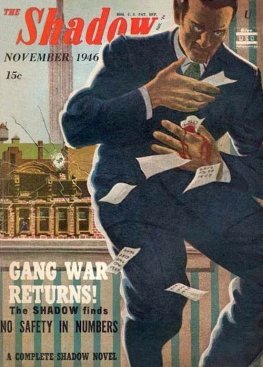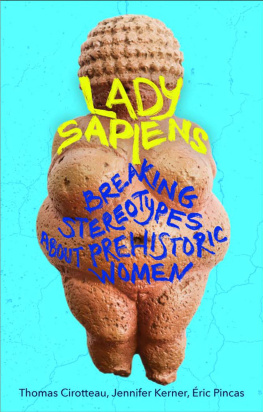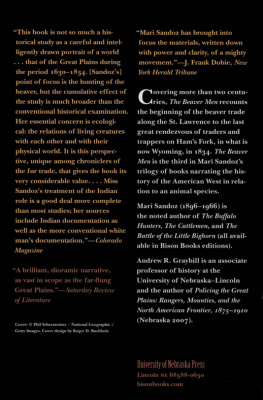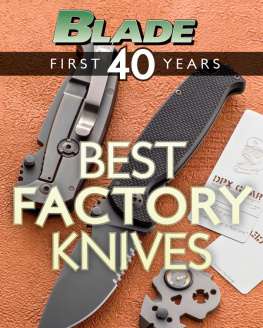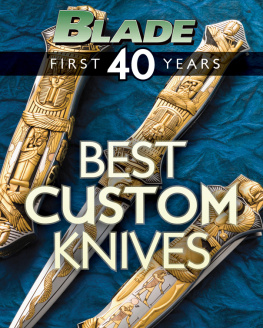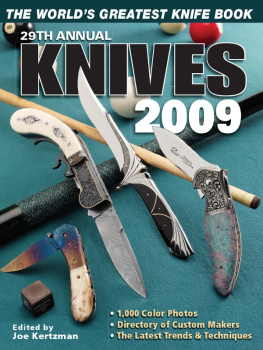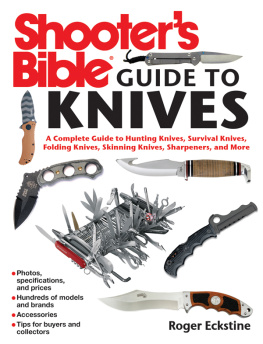Thomas Wilson - Arrowpoints, Spearheads, & Knives of Prehistoric Times
Here you can read online Thomas Wilson - Arrowpoints, Spearheads, & Knives of Prehistoric Times full text of the book (entire story) in english for free. Download pdf and epub, get meaning, cover and reviews about this ebook. year: 1899, genre: Romance novel. Description of the work, (preface) as well as reviews are available. Best literature library LitArk.com created for fans of good reading and offers a wide selection of genres:
Romance novel
Science fiction
Adventure
Detective
Science
History
Home and family
Prose
Art
Politics
Computer
Non-fiction
Religion
Business
Children
Humor
Choose a favorite category and find really read worthwhile books. Enjoy immersion in the world of imagination, feel the emotions of the characters or learn something new for yourself, make an fascinating discovery.

- Book:Arrowpoints, Spearheads, & Knives of Prehistoric Times
- Author:
- Genre:
- Year:1899
- Rating:3 / 5
- Favourites:Add to favourites
- Your mark:
- 60
- 1
- 2
- 3
- 4
- 5
Arrowpoints, Spearheads, & Knives of Prehistoric Times: summary, description and annotation
We offer to read an annotation, description, summary or preface (depends on what the author of the book "Arrowpoints, Spearheads, & Knives of Prehistoric Times" wrote himself). If you haven't found the necessary information about the book — write in the comments, we will try to find it.
Arrowpoints, Spearheads, & Knives of Prehistoric Times — read online for free the complete book (whole text) full work
Below is the text of the book, divided by pages. System saving the place of the last page read, allows you to conveniently read the book "Arrowpoints, Spearheads, & Knives of Prehistoric Times" online for free, without having to search again every time where you left off. Put a bookmark, and you can go to the page where you finished reading at any time.
Font size:
Interval:
Bookmark:

Special contents of this edition copyright 2007 by Skyhorse Publishing, Inc.
Foreword copyright 2007 by Elizabeth Marshall Thomas
Introduction copyright 2007 by Kenneth Tankersley, Ph. D.
All Rights Reserved. No part of this book may be reproduced in any manner without the express written consent of the publisher, except in the case of brief excerpts in critical reviews or articles. All inquiries should be addressed to: Skyhorse Publishing, 555 Eighth Avenue, Suite 903, New York, NY 10018.
www.skyhorsepublishing.com
10 9 8 7 6 5 4 3 2
Library of Congress Cataloging-in-Publication Data
Wilson, Thomas, 1832-1902.
Arrowpoints, spearheads, and knives of prehistoric times/Thomas Wilson.
p. cm.
Originally published: Washington, D.C.: Governement Printing Office, 1899.
ISBN-13: 978-1-60239-004-1 (pbk.: alk. paper)
ISBN-10: 1-60239-004-5 (pbk.: alk. paper)
1. Weapons, Prehistoric. 2. Arrowheads. 3. Spears. 4. Stone age. 5. Weapons, Prehistoric. I. Title.
GN799.W3W55 2007
930.1--dc22
2006038571
Printed in the United States of America
A government publication such as Thomas Wilsons Arrowpoints, Spearheads, and Knives of Prehistoric Times , which first appeared in the compendious Report of the U. S. National Museum for 1897, is seldom revived for the general public. So it is encouraging to see, in our present climate of overwhelming triviality, that this has been done.
An archaeological treatise, the book could also be called intellectual archaeology. An aura of the nineteenth century wafts from its pages, because the meticulous descriptions of the artifacts recall the fascination, perhaps spurred by the discovery of Neanderthal man in 1856, that archaeology once held for the general public, so much so that the science could almost have been called, if not a gentlemans sport, at least a popular hobby for the upper classes, with amateurs digging everywhere, often in competition with professionals.
Social archaeology is also in these pages. Wilson discusses wild American Indians who had rifles. These Indians and the guns, he writes, represented the two extremes of civilization. The Indian was the lowest stratum, his gun the final effect of enlightenment in man. To be sure, this view of nonliterate peoples was common enough at the time and, although diminished, continues to this day, due to the disconnect that sometimes appears between the makers of certain artifacts, who are deemed to be ignorant, and the value placed on their products. Before Namibian Independence, for instance, when a group of Kavango villagers was suddenly forced to relocate, a white collector raided their abandoned homes and took their carved objects to his museum. He meant well enough, though in his opinion the owners did not understand the importance of their possessions and he did, so their objects were better off with him.
Yet Wilson respects the tool makers, however he might characterize them. In his discussion of stone arrowheads that were designed to wobble or rotate in flight, for instance, one senses his awe as he describes the engineering required to create them.
Needless to say, much has been learned since this publication first appeared. The discovery of Cro Magnon man in 1869, and Java man in 1890, were merely a scratch on the surface of prehistory. The tool-using Taung Australo-pithecine was unknown until 1924 and unrecognized as our ancestor until many years later. Until Jane Goodall came along, nobody knew that chimpanzees were tool-users. And no one was paying any attention to the San or Bushmen, now called the First People, who as late as 1970 were making the same tools they had made during the Paleolithic. Thus Wilson could not consider our African origins or those of the tools he studied. He had no way to guess that the bow and arrow could have been invented by prehistoric Bushmen, with, possibly, the hunting bow deriving from the musical bow, probably the earliest musical instrument, or that the arrow could have derived from an acacia thorn or a porcupine quill used as a dart to inject poison. At some point in their early history, the First People evidently put two and two together and began bow hunting.
Nevertheless, Wilson points out that a spear occurs naturally when .re burns the end off a stick, removing the outer layers of wood and hardening the point. One needs only to pick up the stick and throw it. Such spears have been available since wild fires began burning wood, long before anyone evolved to use them. Probably such an item was the first spear.
Students of archaeology will find in this book a treasure trove of informationwith hundreds of stone objects carefully documented and splendidly illustrated, and with ancient mines and quarries mapped and photographed. In a word, it is an example of good sciencenot a final statement, but a firm step forward in our knowledge. And the lay reader will find something equally importanta display of the competence and ingenuity of our ancestors, a record of the human past drawn from the earth, as well as the perfection of Wilsons scholarship, more rare today than in his daya voice from a century ago.
E LIZABETH M ARSHALL T HOMAS
THE 2007 EDITION
Thomas Wilsons Arrowpoints, Spearheads, and Knives of Prehistoric Times was originally published as a report for the United States National Museum, the Smithsonian Institution, in 1897. Wilson wrote the report as part of the Smithsonians commitment to providing an authoritative reference on the cultural history of Native Americans and to promoting scientific innovation and research about the past.
The Smithsonian Institution was founded in 1846 and associated with the Bureau of American Ethnology in 1879. Their combined mission was to salvage as much information as possible about the Indigenous peoples of North America, because it was assumed that their cultures would soon be gone forever. Wilsons book was published eleven years after the surrender of Geronimo and the Chiricahuas in Skeleton Canyon, Arizona, and less than seven years after the massacre at Wounded Knee, South Dakota.
The geographic focus of Wilsons book came from the assumption that Indigenous peoples living east of the Mississippi River had either lost the traditional aspects of their cultures or were completely extinct. This assumption led Wilson, with the help of the Italian-born Warren King Moorehead, to spend three years uncovering over 100 Indigenous burial mounds and cemeteries in the Ohio River valley. A massive collection of goods found in graves and ceremonial objects was made for museum displays and book illustrations, which more often than not focused on the artifacts rather than the people who had made them.
For seven years before his 1887 appointment to Curator of Prehistoric Archaeology in the National Museum, Wilson excavated, collected, and studied Paleolithic, Neolithic, and Iron Age artifacts in Europe. During his European research, Wilson found stone tools and weapons among the remains of large extinct animals, such as mammoths, that lived during the Ice Age, as well as the skeletal remains of what anthropologists know today as Homo erectus and archaic forms of Homo sapiens . While these associations suggested some degree of time depth, they did not provide Wilson with the precise ages of the artifacts.
One of the most remarkable aspects of Wilsons book is that it was written without any knowledge of how old the artifacts were. For those he excavated from stratified deposits, he safely assumed that each layer of earth was formed in the order in which he discovered it. Unfortunately, this information only provided him with relative ages of the artifactswhether they were older or younger in comparison to each other. Though Wilson could count the growth rings of trees on the surface of archaeological sites, they could not provide him with ages far beyond a thousand years.
Next pageFont size:
Interval:
Bookmark:
Similar books «Arrowpoints, Spearheads, & Knives of Prehistoric Times»
Look at similar books to Arrowpoints, Spearheads, & Knives of Prehistoric Times. We have selected literature similar in name and meaning in the hope of providing readers with more options to find new, interesting, not yet read works.
Discussion, reviews of the book Arrowpoints, Spearheads, & Knives of Prehistoric Times and just readers' own opinions. Leave your comments, write what you think about the work, its meaning or the main characters. Specify what exactly you liked and what you didn't like, and why you think so.

